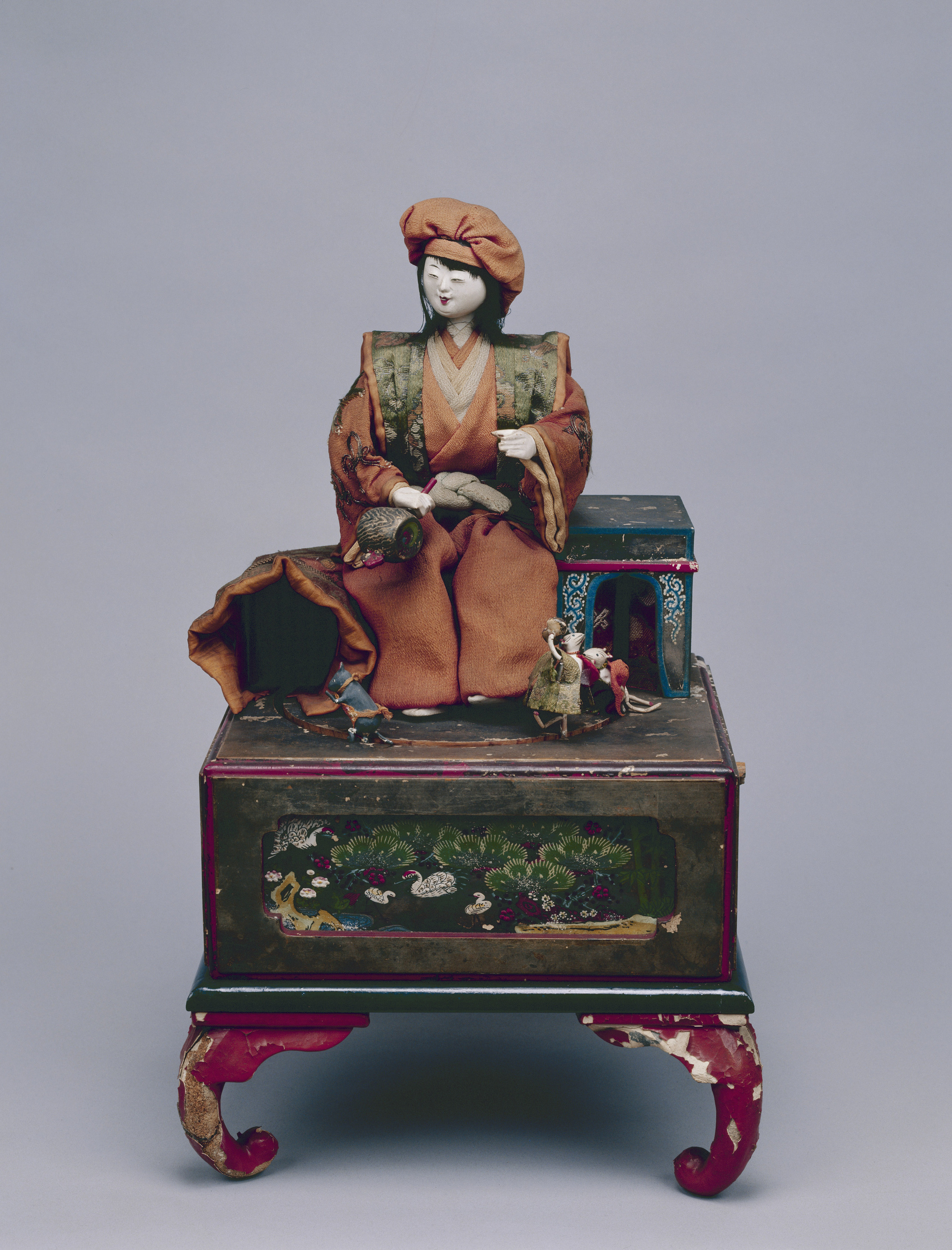- TOP
- Karakuri Dolls (Automata), Daikoku and Mice
Overview
Karakuri Dolls (Automata), Daikoku and Mice
- Museum No.
- IK821-51
Showing 1-6 of 1
| Title | Karakuri Dolls (Automata), Daikoku and Mice |
|---|---|
| Designation | |
| Artist | |
| Category | Textiles(I), Dolls |
| Country | Japan |
| Period | Edo |
| Century | 19th |
| Year | |
| Quantity | |
| Materials | |
| Dimensions | Height 46.5cm |
| Inscription by | |
| Signature/Seals Etc | |
| Donor |
Included Works
 Dolls (From a group of 152)
Dolls (From a group of 152)
IK821
IK821-1 Papier-Mâché Dogs (Inuhariko)
Papier-Mâché Dogs (Inuhariko)
IK821-2 Papier-Mâché Dogs (Inuhariko)
Papier-Mâché Dogs (Inuhariko)
IK821-3
IK821-4 Hina Dolls, Early Kyōho bina (Genroku bina) Type
Hina Dolls, Early Kyōho bina (Genroku bina) Type
IK821-5
IK821-6 Hina Dolls, Kyōho bina Type
Hina Dolls, Kyōho bina Type
IK821-7
IK821-8 Hina Dolls, Kyōho bina Type
Hina Dolls, Kyōho bina Type
IK821-9
IK821-10 Hina Dolls, Jirōzaemon Type
Hina Dolls, Jirōzaemon Type
IK821-11
IK821-12 Hina Dolls, Jirōzaemon Type
Hina Dolls, Jirōzaemon Type
IK821-13 Hina Dolls, Jirōzaemon Type
Hina Dolls, Jirōzaemon Type
IK821-14
IK821-15
IK821-16
IK821-17
This object may be one within a set or the title of a set. To see all objects in the set, perform a Category Search by the Museum Number below, entering numerals only before the hyphen.







In this karakuri tableau, mice escape from Daikoku’s large sack and run around into the box on the other side. Daikoku was originally a Buddhist protective deity, but in Japan his identity became merged with that of indigenous kami, turning him into a favorite folk god. He is one of the Seven Gods of Good Fortune.
Japan-Edo